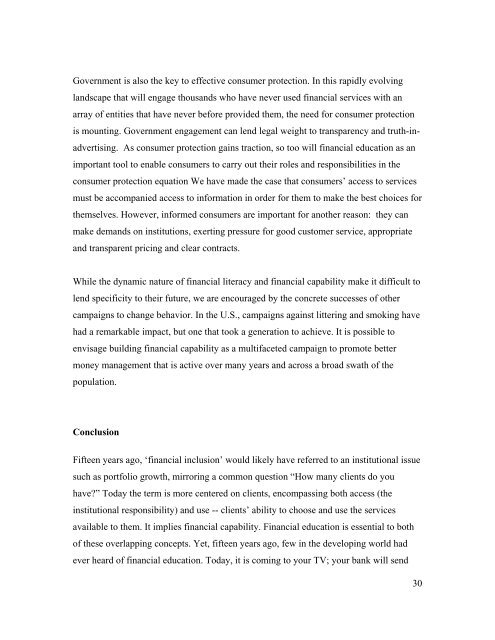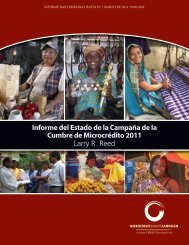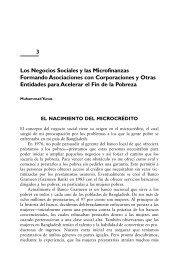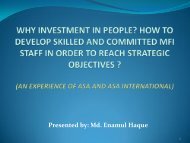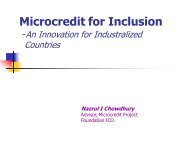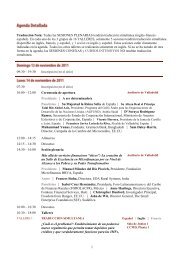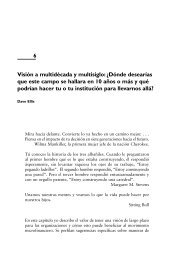Financial Literacy: A Step for Clients towards Financial Inclusion
Financial Literacy: A Step for Clients towards Financial Inclusion
Financial Literacy: A Step for Clients towards Financial Inclusion
You also want an ePaper? Increase the reach of your titles
YUMPU automatically turns print PDFs into web optimized ePapers that Google loves.
Government is also the key to effective consumer protection. In this rapidly evolving<br />
landscape that will engage thousands who have never used financial services with an<br />
array of entities that have never be<strong>for</strong>e provided them, the need <strong>for</strong> consumer protection<br />
is mounting. Government engagement can lend legal weight to transparency and truth-inadvertising.<br />
As consumer protection gains traction, so too will financial education as an<br />
important tool to enable consumers to carry out their roles and responsibilities in the<br />
consumer protection equation We have made the case that consumers’ access to services<br />
must be accompanied access to in<strong>for</strong>mation in order <strong>for</strong> them to make the best choices <strong>for</strong><br />
themselves. However, in<strong>for</strong>med consumers are important <strong>for</strong> another reason: they can<br />
make demands on institutions, exerting pressure <strong>for</strong> good customer service, appropriate<br />
and transparent pricing and clear contracts.<br />
While the dynamic nature of financial literacy and financial capability make it difficult to<br />
lend specificity to their future, we are encouraged by the concrete successes of other<br />
campaigns to change behavior. In the U.S., campaigns against littering and smoking have<br />
had a remarkable impact, but one that took a generation to achieve. It is possible to<br />
envisage building financial capability as a multifaceted campaign to promote better<br />
money management that is active over many years and across a broad swath of the<br />
population.<br />
Conclusion<br />
Fifteen years ago, ‘financial inclusion’ would likely have referred to an institutional issue<br />
such as portfolio growth, mirroring a common question “How many clients do you<br />
have?” Today the term is more centered on clients, encompassing both access (the<br />
institutional responsibility) and use -- clients’ ability to choose and use the services<br />
available to them. It implies financial capability. <strong>Financial</strong> education is essential to both<br />
of these overlapping concepts. Yet, fifteen years ago, few in the developing world had<br />
ever heard of financial education. Today, it is coming to your TV; your bank will send<br />
30


